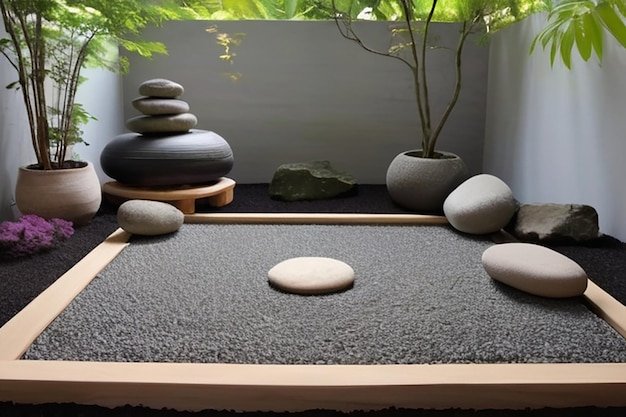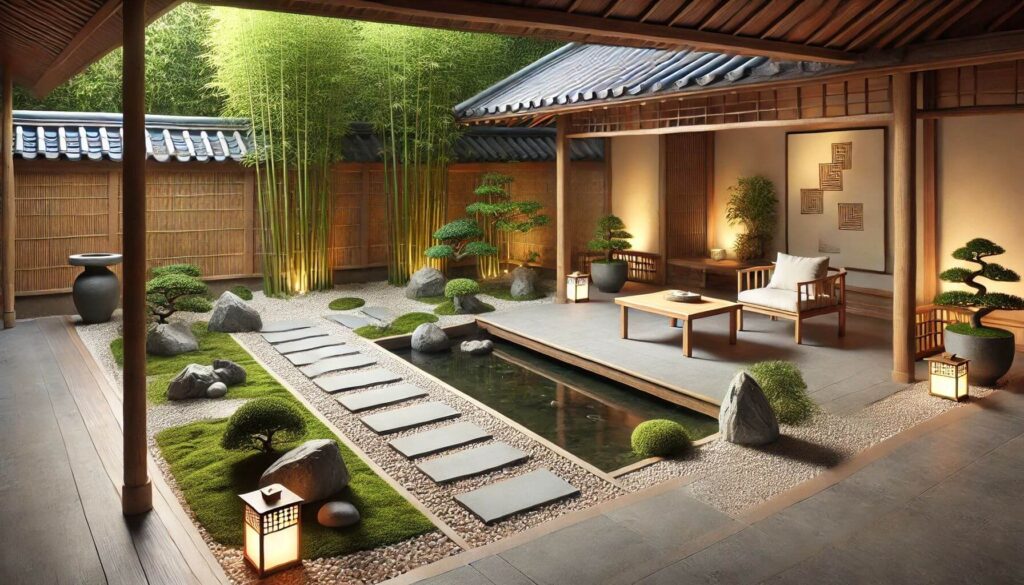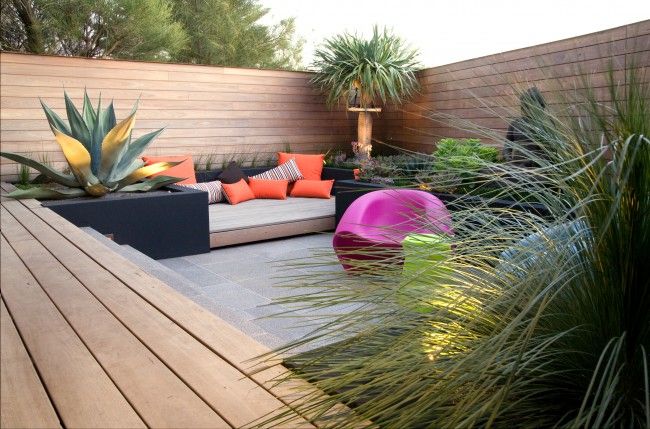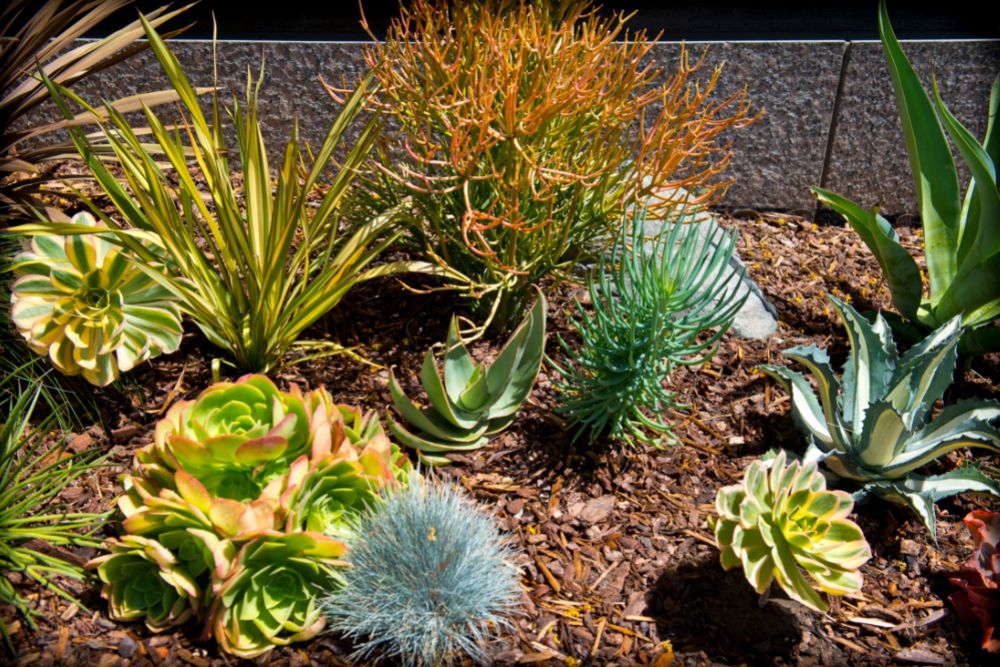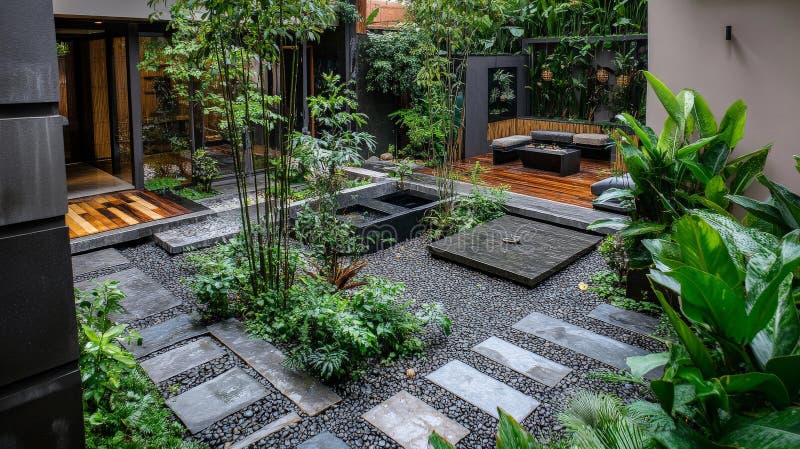
Embracing the Essence of Tranquility: The Allure of a Courtyard Retreat
In the relentless hustle of modern life, finding moments of peace and quiet can feel like a luxury. We’re constantly bombarded with notifications, deadlines, and the general clamor of the world. But what if you could escape it all, right outside your back door? Designing a tranquility courtyard offers precisely that: a personal haven where you can reconnect with yourself and the natural world. It’s a space crafted for relaxation, reflection, and a gentle slowing down of the senses. This isn’t just about landscaping; it’s about curating an experience.
A well-designed courtyard is more than just a pretty space; it’s a carefully considered environment that nurtures your well-being. It’s a place to unwind with a cup of tea in the morning, to lose yourself in a good book in the afternoon, or to gather with loved ones under the stars. The design process is an opportunity to express your personal style and create a space that truly resonates with your soul. This guide will walk you through the essential elements of designing a tranquility courtyard, from initial planning to the final touches, ensuring you create a truly restorative space.
Planning Your Peaceful Paradise: Key Considerations Before You Begin
Before you start envisioning fountains and fragrant blooms, it’s crucial to lay a solid foundation. Proper planning ensures your courtyard is not only beautiful but also functional and sustainable. Here’s what to consider:
1. Assessing Your Space: Size, Shape, and Surroundings
The size and shape of your existing courtyard are the primary determinants of what’s possible. A small, enclosed space might be ideal for a minimalist design with a single water feature and a few carefully chosen plants. A larger courtyard offers more flexibility, allowing for zones dedicated to dining, relaxation, and gardening. Consider the following:
- Dimensions: Measure the length and width of your courtyard accurately.
- Shape: Note the shape (square, rectangular, L-shaped, etc.) and how it influences the flow of movement.
- Surroundings: Observe the existing structures, such as walls, fences, and the architecture of your home. Consider how these elements can be incorporated into your design.
2. Understanding Your Climate and Microclimate
Your local climate and the specific microclimate within your courtyard will significantly impact plant choices and overall comfort. Sunlight exposure, wind patterns, and average temperatures all play a role. Pay attention to:
- Sunlight: Note how much direct sunlight your courtyard receives throughout the day and the seasons. This will influence the types of plants you can grow.
- Wind: Observe wind direction and intensity. Consider windbreaks, such as walls, hedges, or strategically placed trees.
- Temperature: Be aware of temperature extremes, both hot and cold, and choose plants and materials accordingly.
3. Defining Your Needs and Desires: Functionality and Aesthetics
What do you envision doing in your courtyard? This will shape its functionality. Consider:
- Intended Use: Will it be a space for relaxation, entertaining, gardening, or a combination of these?
- Seating: Do you need seating for one, two, or a larger group? Consider comfortable chairs, benches, or even a hammock.
- Dining: If you plan to dine outdoors, you’ll need a table and chairs.
- Gardening: If you enjoy gardening, allocate space for planting beds, pots, or a small vegetable garden.
- Water Features: Do you want a fountain, pond, or simply a birdbath?
- Lighting: Plan for lighting to extend the use of your courtyard into the evening.
- Storage: Consider storage for cushions, gardening tools, or other outdoor items.
4. Budgeting Your Tranquil Transformation
Set a realistic budget before you begin. Courtyard designs can range from simple and affordable to elaborate and expensive. Factor in the cost of:
- Materials: Paving, decking, plants, furniture, and decorative elements.
- Labor: If you’re hiring professionals for landscaping, construction, or other services.
- Contingency: Always include a buffer for unexpected expenses.
Crafting the Ambiance: Key Design Elements for a Serene Courtyard
Once you’ve established the groundwork, it’s time to focus on the design elements that will create your tranquil oasis. These elements work in harmony to evoke a sense of peace and well-being.
1. Hardscaping: The Foundation of Your Design
Hardscaping refers to the non-living elements of your courtyard, such as paving, walls, fences, and structures. These elements provide the framework for your design and contribute significantly to the overall aesthetic. Consider:
- Paving Materials: Choose materials that are durable, weather-resistant, and visually appealing. Options include:
- Stone: Natural stone, such as flagstone, bluestone, or travertine, offers a timeless and elegant look.
- Brick: Brick provides a classic and warm feel.
- Concrete: Concrete can be a cost-effective option, and it can be stamped or stained to mimic other materials.
- Wood: Wood decking adds warmth and texture, but requires regular maintenance.
- Walls and Fences: Walls and fences provide privacy, define the space, and can serve as a backdrop for plants and other features.
- Structures: Consider adding structures like pergolas, arbors, or gazebos to provide shade, create focal points, and enhance the sense of enclosure.
2. Softscaping: Bringing Life and Color into Your Courtyard
Softscaping encompasses the living elements of your courtyard, primarily plants. The selection of plants is crucial for creating a sense of tranquility and adding visual interest. Consider:
- Plant Selection: Choose plants that thrive in your climate and microclimate. Consider:
- Evergreens: Provide year-round greenery and structure.
- Flowering Plants: Add color, fragrance, and attract pollinators.
- Foliage Plants: Offer a variety of textures and colors.
- Consider the size and growth habits of plants to ensure they are appropriate for the space.
- Planting Design: Create a layered effect by combining plants of different heights, textures, and colors. Consider:
- Layering: Use tall plants as a backdrop, medium-sized plants in the middle, and low-growing plants in the foreground.
- Color Palette: Choose a color palette that creates a sense of calm and harmony. Consider using a monochromatic scheme (different shades of one color), or a complementary scheme (colors opposite each other on the color wheel).
- Fragrance: Incorporate fragrant plants, such as lavender, jasmine, or roses, to enhance the sensory experience.
- Maintenance: Choose plants that are relatively low-maintenance to avoid excessive upkeep.
3. Water Features: The Soothing Sounds of Nature
The gentle sound of water can be incredibly calming and can create a sense of serenity. Consider adding a water feature to your courtyard:
- Fountains: Fountains come in a variety of styles, from simple bubbling fountains to elaborate tiered fountains.
- Ponds: Ponds can provide a habitat for aquatic plants and animals, and add a touch of natural beauty.
- Birdbaths: Birdbaths attract birds and add a touch of life to your courtyard.
- Placement: Place your water feature in a location where you can easily enjoy its sound and visual appeal.
4. Lighting: Extending the Enjoyment of Your Courtyard
Lighting is essential for extending the use of your courtyard into the evening and creating a warm and inviting atmosphere. Consider:
- Ambient Lighting: Soft, diffused lighting creates a relaxing atmosphere. Consider using string lights, lanterns, or low-voltage path lighting.
- Accent Lighting: Highlight specific features, such as trees, sculptures, or water features.
- Task Lighting: Provide lighting for dining or reading.
- Consider energy-efficient LED lighting options.
5. Furniture and Accessories: Personalizing Your Space
Furniture and accessories add the finishing touches that make your courtyard feel like a personal sanctuary. Consider:
- Furniture: Choose comfortable and weather-resistant furniture that complements your design style.
- Cushions and Throws: Add cushions and throws for comfort and to introduce color and texture.
- Rugs: Outdoor rugs can define seating areas and add warmth.
- Decorative Elements: Add sculptures, artwork, or other decorative elements to reflect your personal style.
- Consider the materials of your furniture and accessories. Opt for durable and weather-resistant options.
Creating a Sensory Experience: Engaging the Senses in Your Courtyard
A truly tranquil courtyard engages all the senses. By incorporating elements that stimulate sight, sound, smell, touch, and even taste, you can create a deeply immersive and restorative experience. Here’s how:
1. Sight: The Visual Delight
The visual elements of your courtyard are paramount. Consider:
- Color: Use a calming color palette, such as soft greens, blues, and creams.
- Texture: Incorporate a variety of textures, such as smooth paving, rough stone, lush foliage, and textured furniture.
- Form: Vary the shapes and sizes of plants and structures to create visual interest.
- Balance: Strive for balance and harmony in your design, avoiding visual clutter.
2. Sound: The Symphony of Serenity
Sound can be incredibly powerful in creating a sense of calm. Consider:
- Water Features: The gentle sound of water is naturally soothing.
- Wind Chimes: Wind chimes add a delicate and melodic sound.
- Natural Sounds: Encourage birds and other wildlife to visit your courtyard.
- Minimize Noise Pollution: Consider soundproofing elements if your courtyard is exposed to external noise.
3. Smell: The Aromatherapy of Nature
Fragrance can evoke powerful emotions and create a sense of well-being. Consider:
- Fragrant Plants: Plant fragrant flowers, such as lavender, jasmine, roses, and honeysuckle.
- Herbs: Plant herbs, such as rosemary, mint, and thyme, for their pleasant aromas.
- Incense or Candles: Use incense or candles with natural scents to enhance the atmosphere.
4. Touch: The Tactile Experience
The sense of touch can contribute significantly to the overall experience of your courtyard. Consider:
- Natural Materials: Use natural materials, such as stone, wood, and fabrics, for a more tactile experience.
- Textured Surfaces: Incorporate textured surfaces, such as rough stone paving or woven rugs.
- Comfortable Furniture: Choose comfortable furniture with soft cushions and throws.
5. Taste: The Culinary Connection
If you plan to dine in your courtyard, consider incorporating elements related to taste. Consider:
- Edible Plants: Grow herbs, vegetables, and fruits in your courtyard.
- Outdoor Kitchen: If space allows, create an outdoor kitchen with a grill and other amenities.
- Dining Area: Design a comfortable and inviting dining area.
Design Inspirations: Ideas to Spark Your Creativity
Need some inspiration? Here are a few courtyard design ideas to get you started:
1. The Minimalist Retreat
Embrace simplicity with clean lines, neutral colors, and minimal ornamentation. Focus on a few carefully chosen elements, such as a small water feature, a comfortable seating area, and a few strategically placed plants. This design is ideal for small spaces.
2. The Mediterranean Oasis
Evoke the warmth and charm of the Mediterranean with terracotta pots, stucco walls, and lush greenery. Incorporate climbing plants, fragrant herbs, and a shaded seating area. This style is perfect for sunny climates.
3. The Zen Garden
Create a space for meditation and contemplation with a Japanese-inspired design. Use gravel, rocks, and carefully pruned plants to create a sense of balance and harmony. Incorporate a water feature and a small seating area.
4. The Cottage Garden
Embrace a romantic and informal style with a profusion of flowers, climbing roses, and a charming seating area. Use a mix of textures and colors to create a vibrant and inviting space.
5. The Modern Courtyard
Go for a contemporary look with clean lines, geometric shapes, and a minimalist approach to planting. Use modern materials, such as concrete and metal, and incorporate a sleek water feature.
Maintaining Your Tranquil Haven: Tips for Long-Term Enjoyment
Once your courtyard is complete, it’s important to maintain it to ensure its long-term beauty and functionality. Consider:
1. Regular Maintenance: Pruning, Watering, and Cleaning
Regular maintenance is essential for keeping your courtyard looking its best. This includes:
- Pruning: Prune plants regularly to maintain their shape and health.
- Watering: Water plants according to their needs. Consider using a drip irrigation system to conserve water.
- Cleaning: Sweep or hose down paving and other hardscape elements regularly. Clean furniture and accessories.
2. Seasonal Adjustments: Adapting to the Changing Seasons
Make seasonal adjustments to your courtyard to ensure it remains enjoyable throughout the year. Consider:
- Planting: Replace seasonal plants with new ones.
- Furniture: Move furniture to sheltered locations during inclement weather.
- Accessories: Add or remove accessories to reflect the season.
3. Pest Control: Keeping Unwanted Guests at Bay
Take steps to control pests and protect your plants. Consider:
- Natural Pest Control: Use natural methods, such as companion planting, to deter pests.
- Insecticides: Use insecticides only when necessary and follow the manufacturer’s instructions.
- Preventative Measures: Regularly inspect plants for pests and take action promptly.
Transforming Your Space: The Journey to Serenity
Designing a tranquility courtyard is a rewarding process that allows you to create a personal haven for peace and reflection. By carefully considering the elements discussed in this guide, you can transform your outdoor space into a sanctuary that nurtures your well-being and provides a much-needed escape from the stresses of modern life. Embrace the journey, experiment with different ideas, and let your creativity guide you. The result will be a space that you can truly cherish for years to come.
So, take a deep breath, step outside, and begin the journey of designing your own tranquility courtyard. The peace and serenity you’ll find within its walls will be well worth the effort.
